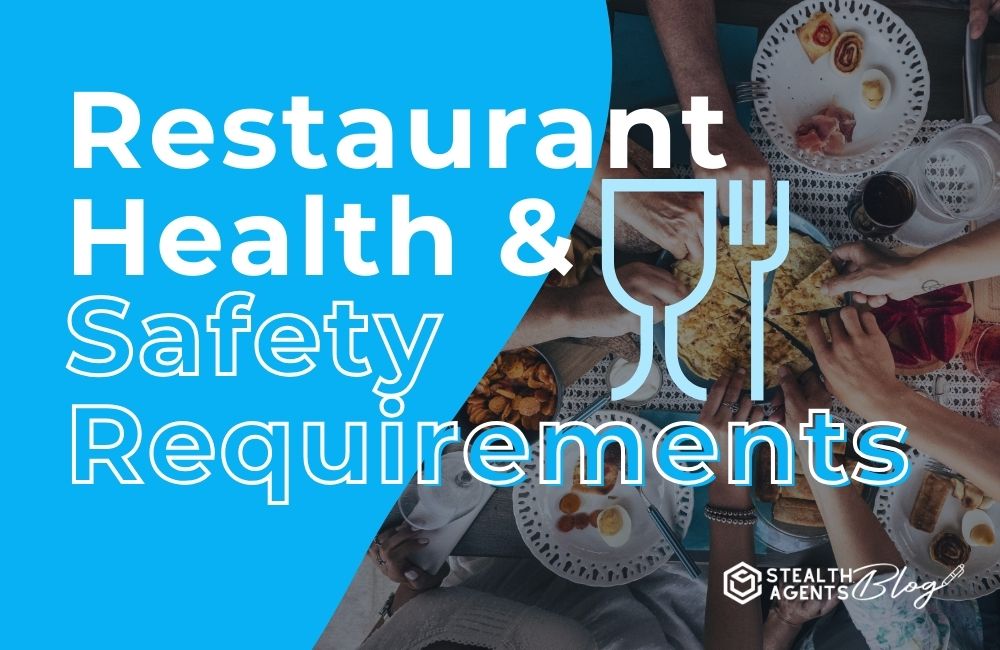Restaurant Health and Safety Requirements
In the culinary world, dedication to health and safety requirements each day, it is equally as important as designing the perfect menu or choosing the right cutlery. The dance of delighting taste buds must be choreographed in the safest of stages. If you’re an eater, restaurateur, server, food enthusiast, or an inquirer, buckle up as we explore the labyrinth of safe dining practices.
The Unseen, Yet Mighty, Pillars: Health and Safety in Restaurants
When you step into a restaurant, the last thing you should worry about is whether your meal is going to be the start of a series of unfortunate events (Cue in Lemony Snicket fans). Health and safety requirements aim to ensure that such thoughts never grace your delightful meal discussions. But, it’s not just about satisfying regulations; it’s about crafting a culture that puts your well-being at the forefront, without compromising on the palatability.
It’s no secret that restaurant owners have to juggle a myriad of plates. There are chefs to please, ingredients to order, finances to manage, and moods to set within the establishment. Toss in a pandemic, and the act gets a whole lot more complicated.
Regulatory Framework: Where the Strings are Pulled
Behind any smoothly running operation, there’s a rulebook that’s as thick as an old encyclopedia. We’re talking local health codes and regulations, the unsung heroes of public dining. Without these guidelines, the culinary stage could be a flamboyant yet hazardous circus ring.
Your county or state health departments are often the puppeteers determining these standards. They dictate everything from how food is stored and prepared to the frequency of restaurant inspections.
Physical Safety Measures: Don’t Play with Fire!
I mean this quite literally. As a restaurant owner or manager, you must have your kitchen fire safety on lock. Burnt soufflés are the only things that should be on fire in your establishment.
The law insists on fire extinguishers and training your staff on how to use them. It’s about more than just satisfying the rules, it’s about being prepared for potential disasters.
Equipment maintenance is crucial too. A wonky burner can lead to more than a burned sauce; it’s a safety risk and a health code violation waiting to happen.
When accidents do occur, it’s the emergency procedures that determine whether a mishap becomes a catastrophe.
Food Safety Practices: Clean is the New Cool
The philosophy of clean eating extends beyond the menu. It loops in how your food is sourced, maintained, and prepared. This is where food safety practices come to the fore.
From ensuring that your produce doesn’t house foreign objects to guarding against cross-contamination, each step in the food handling process is meticulously guarded.
Preparation is key; mixing up your meats on the same cutting board is a cardinal sin (and a potentially dangerous one at that). Storage is the unsung hero in the food safety routine. Temperatures matter; ask any bacteria.
Hygiene isn’t a solo act either. It’s a team sport. The kitchen staff must be a synchronized army of cleanliness.
Employee Health and Hygiene: Your Team’s Wellness Menu
Imagine your sous chef sneezing into the Béarnaise sauce—yikes! Employee health and hygiene is the ingredient that should never be absent.
Policies regarding illness are more important than ever. The mantra “the show must go on” doesn’t fly when it comes to infectious diseases. Employees must know when to step down and take a sick day.
A comprehensive hygiene regimen should be in place; from regular handwashing to ensuring uniforms are as fresh as the food they serve.
Employee training isn’t just about perfecting that artisanal latte; it’s about knowing the ins and outs of maintaining an illness-free zone.
Customer Safety Considerations: The Final Service Touch
The meal isn’t over when the dessert fork taps out the final course of your dining experience. How tables are set, and reset, matters.
Seating arrangements should not only cater to your comfort but also social distancing guidelines.
Sanitation practices should be in plain sight and rigorous. You should be able to eat off the floor—literally (but please don’t).
Allergies are becoming more prevalent, and restaurants should be ready. It’s not just about accommodating dietary whims; it’s about saving a life.
Technology Integration for Safety: The Digital Dawn
In a world where your smartphone can do a day’s worth of chores, it’s time to integrate tech for a safer dining experience. Contactless services aren’t just trendy; they’re safer.
Digital menus not only save trees but also potential COVID-19 transmission.
Sanitation protocols go high-tech with UV cleaning tech and touchless faucets. It’s no longer just about the food; it’s about the innovative ecosystem in which it’s served.
Conclusion: Seasoning Safe Practices into the Dining Experience
The dining scene is not just about sating appetites anymore. Safety should be the secret ingredient that’s hidden in plain sight. Only when we can dine without a care should we declare that the meal was truly remarkable, in every possible way.
It’s a piece of the hospitality puzzle that can often be overlooked. But when it’s in place, it seamlessly compliments the full-bodied experience of dining out.
For those who manage the entrepreneurial operas of eateries and those who take a seat in the operatic setting, remember, it’s not just about what’s on the plate—it’s about what allows that meal to grace your table safely.
May your meals be filled with joy, free of worry, and seasoned with the utmost of safety.












